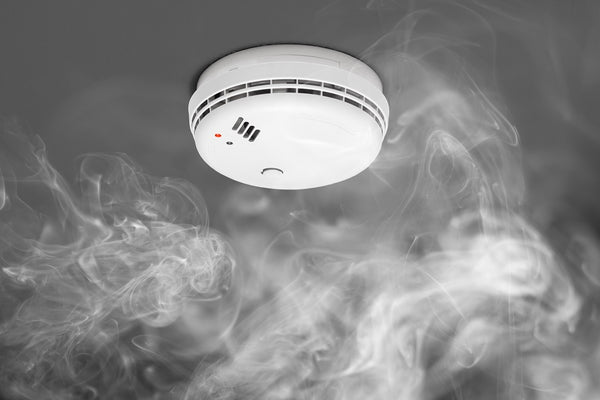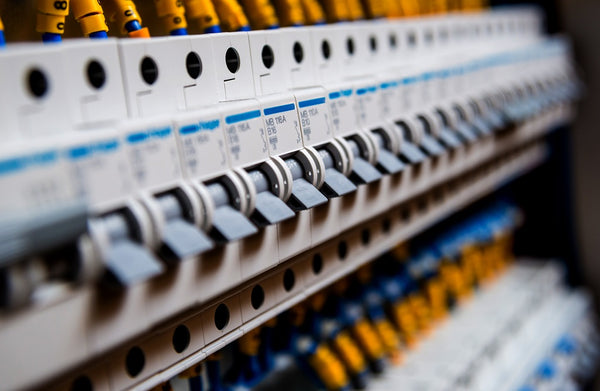What is a PTAC? A packaged terminal air conditioner is a ductless and self-contained AC unit that is put in place to deliver warm air or cool air to small areas, such as rooms in apartment buildings.
PTACs are commonly used in apartments, senior residential facilities, hospitals, and hotels. These units will often be positioned under a window of each room that they service.
A terminal air conditioning system is efficient because it allows individuals to adjust the PTAC unit to their individual preferences and have full control of the unit while not affecting anyone else. Purchasing the right HVAC supplies and finding the right AC unit for you, whether it be a PTAC vs mini-splits unit, is key to your comfort.
Different Types of Packaged Terminal Air Conditioners
There are two different types of PTACs: heat pumps and electric heaters. Below, we'll look at the differences between the two:
Heat Pumps
What is a PTAC air conditioner that is powered by a heat pump? It is a piece of equipment containing a heat pump, evaporator coils, and air handler, all in one unit.
Pros:
-
Versatility: This PTAC heat pump unit can be used for heating and cooling.
-
Energy-efficient: It is an efficient air conditioner when in cooling mode.
Сons:
-
Less powerful: When used in the heating mode, it is not as powerful as a traditional HVAC unit.
-
Price: This type of PTAC unit can be expensive at the initial purchase.
Electric Heaters
Electric heater-powered PTAC units are equally efficient for heating in the winter and cooling properly in the summer months. They can be great additions to sunrooms and other indoor uses.
Pros:
-
Highly efficient: This type of PTAC unit has impressive heating capabilities when used as a heater.
-
Less expensive: Unlike the heat pump PTAC, their initial price is less than an electric heater.
-
Not as noisy: They emit very low sounds and are not as disruptive as the other types of AC units.
Cons:
-
Pricier over time: Their initial cost is minimal, but the monthly costs are more expensive.
-
Not as energy-efficient: Are PTAC units energy-efficient? Not always, as they require more energy on a day-to-day basis than other AC units.
Shop for HVAC spare parts, dampers, and controllers now at Blackhawk Supply store!
HVAC SUPPLIES FOR SALEMini Splits AC Units: Pros and Cons

Ductless mini-split AC is becoming more commonly used in residential, commercial, and industrial facilities because of its efficiency and the scalable advantage that it offers. These types of units are comfortable to use because they are installed out of people's way: the indoor units are installed up high on the wall.
Pros:
-
Flexible and scalable: As many as you need can be installed and they work independently from each other, offering zone comfort room per room.
-
Applications: They work well in rooms that don't have a ductwork system. They can be used in single rooms, offices, or small storage areas.
-
Cost-effective: Leaky ducts often contribute to a high energy bill, but a ductless system eliminates this and therefore it is much less pricey than other AC units.
Cons:
-
Expensive: Their initial cost is quite expensive, almost double the cost of a traditional outdoor unit.
-
Not comfortable: Many people don't enjoy having an AC unit in their room.
-
Not easy to drain: AC units need to be drained and the ductless Mini Split systems have not yet found a way to do this. It is advised to purchase this type of system from a professional.
PTAC vs Mini Splits: Which One Should You Choose?
Air conditioner units can be purchased these days without any difficulties, but finding the right one that will best suit you is often the real challenge. You need an air conditioning unit that will offer you the satisfying level of cooling and heating that you are looking for, as well as greatly improve your indoor air quality.
In addition, it is important to consider your needs, whether you want to cool or heat a specific room in your home, office, or even a commercial property. Your perfect match will need to be chosen carefully. So, let's dive into the difference between packaged terminal air conditioners vs ductless mini-splits:
-
Installation: This is a key feature when shopping for an AC unit, and both PTAC and Mini-Splits units offer easy installation. However, it is important to note that the PTAC unit will require drilling a hole in the wall, which could pose more of a challenge than a Mini-Split unit.
-
Energy-efficiency: Energy efficiency, along with performance, is important when choosing an air conditioner. The Mini-Splits unit is more technologically advanced and therefore offers a much higher energy efficiency ratio than even the newer models of PTAC units.
-
Cooling and Heating Capabilities: As we mentioned above, performance plays an equally important role when it comes to the AC unit that is right for you. It is important to remember that the performance of an AC unit is directly linked to comfort. While it must be said that PTAC units work quite well they don't have the same range or precise capability as a Mini-Splits unit.
-
Versatility and flexibility: When it comes down to the PTAC vs ductless Mini-Split system, most PTAC units are popularly used in hotels and hospitals while Mini-Splits units can be used in a wide range of residential and commercial facilities.
-
Single-room vs multi-room applications: Ductless Mini-Split units can be used not just for a single room but for a multitude of separate rooms. This is because a Mini-Splits unit often comes equipped with multi-air handlers.
- Control: Both PTAC and Mini-Splits can be connected wired or wirelessly to a room's thermostat; but additionally, Mini-Splits can be controlled wirelessly using a smartphone or a tablet.
Where to Get Your HVAC Outdoor and Indoor Unit?
Now that we have done a run-through of the different types of AC units, it's time for you to get your own indoor and outdoor units. If you are still unsure about your choice and are struggling to decide between PTAC vs Mini-Split system, please contact us, and Blackhawk Supply will make sure you make the best choice for your needs.





